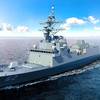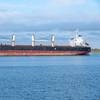GL Guidelines, Analysis of Alternative Ship Design
Germanischer Lloyd's new Guidelines for the Analysis of Alternative Ship Design and Arrangements (V-2-1) come into force in mid-July. Alternative ship design and arrangements are solutions which deviate from the prescriptive requirements of SOLAS regulations. Nevertheless they are suitable to satisfy the intent of the respective regulations.
Alternative designs and arrangements include a wide range of measures, such as alternative shipboard structures and systems based on novel or unique designs, as well as traditional shipboard structures and systems that are installed in alternative arrangements or configurations. Alternative design and arrangements as specified in SOLAS can be focused on particular systems, subsystems or individual components, or can extend to the whole concept of the ship.
Hence, alternative ship designs offer shipyards the opportunity to create more competitive ship designs, such as the introduction of additional features and new design ideas that in the past could not have been implemented. Such designs and arrangements may be accepted, if by means of risk assessment it can be demonstrated that a novel design offers an equivalent level of safety as the requirements of existing SOLAS regulations.
The application of alternative design and arrangements has been open with respect to fire safety (SOLAS chapter II-2) since 2002. From July 2010 the application will also be opened to machinery and periodically unattended machinery spaces (SOLAS chapter II-1, parts C and E), electrical installations (SOLAS chapter II-1, part D), as well as life-saving appliances (LSA) and arrangements (SOLAS chapter III). Alternative design and arrangements for selected design aspects and installations may be accepted, for a particular ship or group of ships, provided that the alternative design and arrangements meet the intent of the requirements concerned and provide an equivalent level of safety to the relevant SOLAS requirements.
The process for analysing safety equivalency for alternative designs and arrangements is outlined in the IMO circulars MSC/Circ. 1002 and MSC.1/Circ. 1212. This process typically is based on a holistic risk assessment, which to date has not been widely used in the maritime industry. Hence, GL decided to share its experiences from consultancies in various alternative design projects by providing these guidelines to owners, yards and designers.
The GL guidelines for the Analysis of Alternative Design and Arrangements contain recommendations and requirements for the application of the process of alternative design and arrangements.
The objectives of these guidelines are to provide an overview on the objectives and working tasks of the alternative design process, to provide recommendations on the implementation of the alternative design process and to make it possible for our customers to apply the alternative design process efficiently in order to take advantage of the new design opportunities that are offered.
For the purpose of usability, in order to avoid having to work with a set of documents in parallel, the GL Guidelines for the Analysis of Alternative Design and Arrangements contain the full text of IMO circulars, which is enriched by comprehensive recommendations for the practical implementation of the individual steps of the alternative design process; hence providing a direct link between IMO recommendations and GL experience.
(www.gl-group.com)










